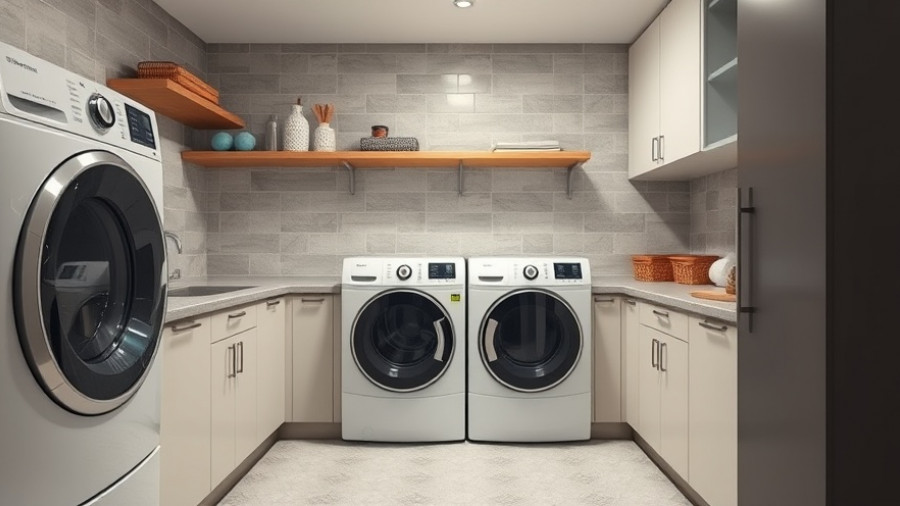
A New Era of Home DIY: Removing Subfloor Staples with Ease
If you've tackled the task of removing old flooring, you understand the frustration that comes with a myriad of staples left embedded in the subfloor. In California's urban and suburban homes, where remodeling is a common pursuit, knowing how to remove these staples effectively can save time and preserve your home's foundation. As designer Lily Huang points out, those "tiny, sharp, and numerous" staples are often overlooked enemies in home improvement projects.
Why Effective Removal Matters
Before diving into staple-removal techniques, it's vital to understand why tackling this task correctly is essential. Improper removal can lead to damage not only to your subfloor but also compromise the installation of new flooring. Furthermore, old staples can pose safety risks, particularly if they disturb underlying materials that may harbor asbestos in older homes, making it crucial to approach this job with care.
Essential Safety Measures
Always begin any DIY project with safety in mind. As remodeler Thomas Borcherding advises, wearing safety glasses and gloves is essential to protect against flying staples, which can act like miniature darts. Additionally, disposing of the removed staples responsibly—using a sealed box that won’t puncture—ensures safety throughout the process.
Top Techniques for Staple Removal
Building upon the knowledge shared by various experts, we have collected some of the most effective methods for removing subfloor staples:
1. Needle-Nose Pliers
For staples that are protruding slightly, needle-nose pliers can be your best friend. Grip the staple close to the subfloor and rock it back and forth while pulling upward. Although it may take a bit longer, this method can prevent damage to the wood.
2. Channel Locks
These locking curved jaw pliers allow for a secure grip on staples, letting you pull them out efficiently. The rocking motion is gentler on your subfloor, lessening the risk of damage.
3. Floor Scraper Hack
If you're keen on efficiency, a four-inch floor scraper can expedite removal. With the dull side of the blade facing out, push the scraper across the floor to loosen multiple staples simultaneously. Just keep in mind that the staples may fly, so protective eyewear is a must.
4. Flathead Screwdriver and Hammer
For flush staples, use a flathead screwdriver as a pry bar. Insert it carefully beneath the staple and twist gently. A gentle tap with a hammer can help drive the screwdriver into place, making removal easier without damaging your subfloor.
5. Specialty Staple Remover Tools
Although many DIYers prefer uncomplicated tools like pliers or a hammer, investing in a multi-toothed staple puller can prove effective for varied staple types, especially when visibility is favorable.
6. Hammer and Nail Puller Method
For staples buried deep within the subfloor, a nail puller can make a significant difference. Tap the nail puller under the staple with a hammer for a stronger extraction. This method is especially useful in cases where pliers struggle.
Common Misconceptions About Staple Removal
Many people assume that pulling staples by hand is the only method available. In reality, using the right tools can save time and frustration. Additionally, there's a lingering belief that staples can be left in place if you're planning on covering them up later, which can lead to uneven flooring that may cause further issues down the line.
DIY or Hire a Professional?
While many homeowners feel confident in taking on renovation projects on their own, deciding whether to undertake this task depends on your comfort level and experience. If you find the initial steps overwhelming, reaching out to a professional can ensure your floors are properly prepared. Consider your options carefully to determine what will ultimately serve your home best.
Conclusion: Start Your DIY Journey Wisely
Removing subfloor staples shouldn't be a daunting task. With the right approach, tools, and safety precautions, you can engage in efficient home renovations that will enhance your living space. As the California DIY community continues to grow, don't hesitate to share your techniques and tips with others. Join your local home improvement group or forum to connect with fellow enthusiasts.
Ready to take on your home project? Gather your tools and let’s get started. Your well-prepared subfloor awaits!
 Add Row
Add Row  Add
Add 




Write A Comment